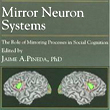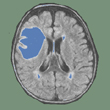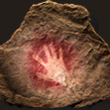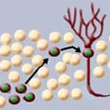Monday, 14 January 2013
Links on Forgetting and Amnesia
 This week, as I have before in this blog, I am posting a set of new links to other web sites that discuss a subject covered in The Brain from Top to Bottom. The subject this week is the sub-topic “Forgetting and Amnesia” under the topic “Memory and the Brain”. For each link, I also provide a brief description of the content on the site in question. (more…)
This week, as I have before in this blog, I am posting a set of new links to other web sites that discuss a subject covered in The Brain from Top to Bottom. The subject this week is the sub-topic “Forgetting and Amnesia” under the topic “Memory and the Brain”. For each link, I also provide a brief description of the content on the site in question. (more…)
Memory and the Brain | Comments Closed
Monday, 7 January 2013
Eight Problems with Mirror Neurons
 Mirror neurons are neurons with fascinating characteristics that were discovered in monkeys in the mid-1990s. Located mainly in Area F5 of the cortex, these neurons are activated not only when a monkey performs a specific action but also when that monkey simply sees another monkey perform that same action. This is surprising behaviour, to say the least, for neurons located in a motor area of the cortex.
Mirror neurons are neurons with fascinating characteristics that were discovered in monkeys in the mid-1990s. Located mainly in Area F5 of the cortex, these neurons are activated not only when a monkey performs a specific action but also when that monkey simply sees another monkey perform that same action. This is surprising behaviour, to say the least, for neurons located in a motor area of the cortex.
Since just about the same area (the premotor area) exists in the human brain, it is highly likely that humans also have mirror neurons. But the data that have been gathered on this subject remain controversial, because of constraints on experiments with human beings. (more…)
Body Movement and the Brain | Comments Closed
Monday, 31 December 2012
Speaking Without Broca’s Area

From Dr. Paul Broca’s observations in the 1860s, we know that the left inferior frontal cortex of the brain, now also known as Broca’s area, is heavily involved in human language abilities. At first, this area was thought to be associated only with the production of language, but gradually its role has come to be regarded as more complex, and recent brain-imaging data have actually made the old dichotomy between language-production areas and language-understanding areas somewhat obsolete. (more…)
From Thought to Language | Comments Closed
Monday, 24 December 2012
What does it mean to be human?
 The web site What does it mean to be human? was developed by the Smithsonian National Museum of Natural History in Washington D.C.. Dedicated to the dissemination of knowledge on the evolution of the human species, this site, with its graphics evoking the African savanna, the cradle of humanity, addresses myriad questions that will arouse the curiosity of a wide audience—questions such as:
The web site What does it mean to be human? was developed by the Smithsonian National Museum of Natural History in Washington D.C.. Dedicated to the dissemination of knowledge on the evolution of the human species, this site, with its graphics evoking the African savanna, the cradle of humanity, addresses myriad questions that will arouse the curiosity of a wide audience—questions such as:
How do evolution and Darwinian natural selection work?
What is the relationship between humans and the species of apes alive today?
Did humans evolve in a straight line, one species after another?
How can scientists estimate the age of a fossil, or the climate conditions a million years ago?
Is the concept of evolution compatible with religion? (more…)
Evolution and the Brain | Comments Closed
Monday, 17 December 2012
Neurogenesis and Depression
 The processes leading to the many different illnesses that can affect people’s psychic equilibrium are still hotly debated. Often, these processes involve multiple contributing factors which is why there are so many different hypotheses about them. In the case of depression, for example, one of the best known is the monoamine hypothesis, which associates the disease with underactivity of certain neurotransmitters. such as serotonin.
The processes leading to the many different illnesses that can affect people’s psychic equilibrium are still hotly debated. Often, these processes involve multiple contributing factors which is why there are so many different hypotheses about them. In the case of depression, for example, one of the best known is the monoamine hypothesis, which associates the disease with underactivity of certain neurotransmitters. such as serotonin.
Several research laboratories are now working on a more recent hypothesis about the cause of depression, involving a phenomenon that was first confirmed in humans in the late 1990s: neurogenesis, meaning the birth of new neurons in the adult brain. The starting point for this hypothesis is that these young neurons seem to show greater plasticity and are found only in certain parts of the brain, such as the dentate gyrus of the hippocampus, that are associated with emotions. (more…)
Memory and the Brain, Mental Disorders | Comments Closed







